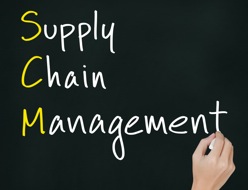What is the Supply Chain Anyways?

While many people are unclear as to what the term “supply chain” actually means, every time they make a purchase they become a participant in the process. Think about a pair of shoes you might buy; what steps had to occur before those shoes were available for purchase by you, the end consumer? Before assembly of the shoes can even begin the various components that make up an individual shoe (bill of materials) and services to support the manufacture need to be sourced. The suppliers of these components would in turn have their own suppliers. Consider the sole of the shoe. First rubber has to be refined from a plastics manufacturer then shipped to a pressing company with the means to melt and mould the rubber to form the sole. After this task is completed, the soles are transferred along to the shoe assembly operation. Once the shoes are finished, wholesalers distribute the product to retailers. Retailers then sell the shoes to consumers. While rather simplified, this is an example of a supply chain.
According to the Canadian Supply Chain Sector Council a supply chain will “virtually universally encompass the following three functions: i. supply of materials to a manufacturer; ii. the manufacturing process; and, iii. the distribution of finished goods through a network of distributors and retailers to a final customer. Companies involved in various stages of this process are linked to each other through a supply chain.” In addition to providing goods, a supply chain also provides services. Supply chains are at work within both the private and public sectors and as such have a broad, sometimes international reach. People who are involved in the process need to be cognizant of this and ensure that the flow of data, goods and services is carried out in an ethical, sustainable and socially responsible manner.
Industries where End to End thinking can be applied to great advantage. By focusing and coordinating all the activities towards the end goal you can increase efficiency and achieve optimal flow. End to ends is the primary focus in Supply Chain Management (SCM). Effective supply chain management relies on the information and data that is generated from the activities within the supply chain. If the flow of information is poor or inaccurate it can create problems such as a glut or shortage of parts or end product inventory. In a supply chain where there’s effective information flow however, costs as well as product time to market are reduced, inventory is streamlined and there is built-in flexibility to more easily adapt to changes. The ultimate goal in supply chain is to deliver the right amount of product at just the right time. While not all factors can be controlled in a supply chain due to all the various “moving parts,” by leveraging the information and data collected you can better prepare and respond to any situation that may arise.
While we tend not to realize it, supply chains play an extremely important role in our day-to-day lives. After all, without them the shelves at our local stores would be inadequately stocked and we may be unable to obtain the goods and services we need. Also think about some of the factors that are considered when discussing economic indicators: manufacturing, consumer price index and consumer confidence for example. Whether directly or indirectly, supply chains are involved. Additionally, supply chains provide a large number of jobs. In Canada alone, more than 750,000 individuals across a range of occupations and industries are employed in this sector. It’s interesting that despite the essential part it plays in society most people rarely give it a second thought – kind of like sliced bread. And just as we’ve always wondered where we’d be without sliced bread, the same could be said for the supply chain.
RSVP for Change
You know the role you play within your company and have a deep understanding of and aptitude for the activities you perform day-to-day. Take time to think about how your activities fit in with and support other activities occurring in your business. Think outside your individual silo and learn more about the processes that occur before and after an item lands on your desk, be it a literal or figurative one. You may discover ways to optimize and streamline processes allowing you to work more efficiently and effectively.
Management Perspective
Supply Chain is just one of many areas that you need to review. Are you missing out on opportunities to realize cost savings by streamlining some of the activities within the supply chain? Does it have the potential to be a strategic differentiator for your business (think Walmart or customer service)? How can you leverage this asset to your advantage?
Linda Craig (@LindaCraigRSVP)
More Supply Chain insights at www.Retention.ca


